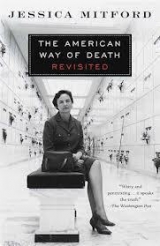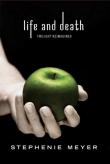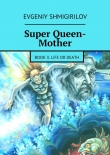
Текст книги "The American Way of Death Revisited"
Автор книги: Jessica Mitford
сообщить о нарушении
Текущая страница: 12 (всего у книги 23 страниц)
Arthur Schlesinger and Nancy Tuckerman went in through the Green Room. “It was appalling,” Arthur reported. “When I came closer it looked less and less like him. It is too waxen, too made-up.” Nancy echoed faintly that the face resembled “the rubber masks stores sell as novelties.” He urged Bob to “close the casket.”… Walton [William Walton, artist, friend of Kennedy’s] looked as long as he could, with a growing sense of outrage. He said to Bob, “You mustn’t keep it open. It has no resemblance to the President. It’s a wax dummy.”
And closed the coffin did remain. UPI commented as follows:
When Mrs. Jacqueline Kennedy decided that President Kennedy’s casket would remain closed while his body lay in state, she acted as many religious leaders wish that all bereaved families would…. They feel that it is pagan rather than Christian to focus attention on the corpse. It is worth noting that in other particulars as well, the conduct of the Kennedy funeral represented a departure from the prevailing funerary practices fostered by the American death industries. There were no flowers, by request of the Kennedy family. At no point did a Cadillac hearse intrude; the coffin, covered by a flag, was transported by gun carriage.
12. FASHIONS IN FUNERALS
Disposal of the dead falls rather into a class with fashions, than with either customs or folkways on the one hand, or institutions on the other…. [S]ocial practices of disposing of the dead are of a kind with fashion of dress, luxury and etiquette.
—A. L. KROEBER, “Disposal of the Dead,” American Anthropologist, July-September 1927
One of the interesting things about burial practices is that they provide many a clue to the customs and society of the living. The very word “antiquarian” conjures up the picture of a mild-eyed historian groping about amidst old tombstones, copying down epitaphs with their folksy inscriptions and irregular spelling, extrapolating from these a picture of the quaint people and homey ways of yore. There is unconscious wit: the widow’s epitaph to her husband, “Rest in peace—until we meet again.” There is gay inventiveness:
Here lie I, Master Elginbrod.
Have mercy on my soul, O God,
As I would have if I were God
And thou wert Master Elginbrod.
There is pathos: “I will awake, O Christ, when thou callest me, but let me sleep awhile—for I am very weary.” And bathos: “ ’Tis but the casket that lies here; the gem that fills it sparkles yet.”
For the study of prehistory, archaeologists rely heavily on what they can find in and around tombs, graves, monuments; and from the tools, jewels, household articles, symbols found with the dead, they reconstruct whole civilizations, infer entire systems of religious and ethical beliefs.
Inevitably, some go-ahead team of thirtieth-century archaeologists will labor to reconstruct our present-day level of civilization from a study of our burial practices. It is depressing to think of them digging and poking about in our new crop of Forest Lawns, the shouts of discovery as they come upon the mass-produced granite horrors, the repetitive flat bronze markers (the legends, like greeting cards and singing telegrams, chosen from an approved list maintained at the cemetery office), and, under the ground, the stamped-out metal casket shells resembling nothing so much as those bronzed and silvered souvenirs for sale at airport gift shops. Prying further, they would find reposing in each of these on a comfortable mattress of innerspring or foam-rubber construction a standardized, rouged, or suntanned specimen of Homo sapiens, USA, attired in business suit or flowing negligee according to sex. Our archaeologists would puzzle exceedingly over the inner meaning of the tenement mausoleums with their six or seven tiers of adjoining crypt spaces. Were the tenants of these, they might wonder, engaged in some ritual act of contemplation, surprised by sudden disaster? Busily scribbling notes, they would describe the companion his-and-her vaults for husband and wife, and the approved inscription on these: TOGETHER FOREVER. For purposes of comparison they might recall the words of Andrew Marvell, a poet from an earlier culture, who thus addressed his coy mistress:
The grave’s a fine and private place,
But none, I think, do there embrace.
They might rashly conclude that twentieth-century America was a nation of abjectly imitative conformists, devoted to machine-made gadgetry and mass-produced art of a debased quality; that its dominant theology was a weird mixture of primitive superstitions and superficial attitudes towards death, overlaid with a distinct tendency towards necrophilism.
Where did our burial practices come from? There is little scholarship on the subject. Thousands of books have been written describing, cataloguing, theorizing about the funeral procedures of ancient and modern peoples from the Aztecs to the Zulus; but about contemporary American burial practices almost nothing has been written.
The National Funeral Directors Association, aware of this omission and anxious to correct it, commissioned two writers, Robert W. Habenstein and William M. Lamers, to explore the subject and to come up with some answers. The resulting studies, The History of American Funeral Directingand Funeral Customs the World Over, bear the imprint of the National Funeral Directors Association and were the subject of a continuing promotion campaign by that organization: “Buy one for each clergyman in your community!” “Place them in your libraries!” are the slogans. The campaign has had some success. In fact, in most libraries these volumes sponsored by the undertaking trade are the only ones to be found on the subject of the American funeral.
The official historians of American undertaking describe the origin of our burial practices as follows: “As a result of a long, slow development, with its roots deep in the history of Western civilization, it is the common American mind today that the dead merit professional funeral services from a lay occupational group. These services include embalming, the preparation of the body for final viewing, a waiting period between death and disposition, the use for everyone of a casket that is attractive and protects the remains, a dignified and ceremonious service with consideration for the feelings of the bereaved, and an expression of the individual and group beliefs….” Elsewhere they assert: “The roots of American funeral behavior extend back in a direct line several thousand years to early Judaeo-Christian beliefs as to the nature of God, man and the hereafter…. Despite the antiquity of these roots their importance as regards the treatment of the dead in the world that commonly calls itself Christian today cannot be overemphasized.”
In two misinformation-packed paragraphs, we are assured not only that American funerals are based on hallowed custom and tradition, but that they conform to long-held religious doctrine. There is more than a hint of warning in these words for the would-be funeral reformer; he who would be bold enough to make light of or tamper with the fundamental beliefs and ancient traditions of a society in so sensitive an area as behavior towards its dead had better think twice.
A “long, slow development, with its roots deep in the history of Western civilization,” or a short, fast sprint with its roots deep in moneymaking? A brief look backward would seem to establish that there is no resemblance between the funeral practices of today and those of even seventy-five to one hundred years ago, and that there is nothing in the “history of Western civilization” to support the thesis of continuity and gradual development of funeral customs. On the contrary, the salient features of the contemporary American funeral (beautification of the corpse, metal casket and vault, banks of store-bought flowers, the ubiquitous offices of the “funeral director”) are all of very recent vintage in this country, and each has been methodically designed and tailored to extract maximum profit for the trade.
Nor can responsibility for the twentieth-century American funeral be laid at the door of “Judaeo-Christian beliefs.” The major Western faiths have remarkably little to say about how funerals should be conducted. Such doctrinal statements as have been enunciated concerning disposal of the dead invariably stress simplicity, the equality of all men in death, emphasis on the spiritual aspects rather than on the physical remains.
The Roman Catholic Church requires that the following, simple instructions be observed: “(1) That the body be decently laid out; (2) that lights be placed beside the body; (3) that a cross be laid upon the breast, or failing that, the hands laid on the breast in the form of a cross; (4) that the body be sprinkled with holy water and incense at stated times; (5) that it be buried in consecrated ground.” The Jewish religion specifically prohibits display in connection with funerals: “It is strictly ordained that there must be no adornment of the plain wooden coffin used by the Jew, nor may flowers be placed inside or outside. Plumes, velvet palls and the like are strictly prohibited, and all show and display of wealth discouraged; moreover, the synagogue holds itself responsible for the arrangements for burial, dispensing with the services of the Dismal Trade.” In Israel today, uncoffined burial is the rule, and the deceased is returned to the earth in a simple shroud. The Church of England’s Book of Common Prayer, written several centuries before burial receptacles came into general use, makes no mention of coffins in connection with the funeral service, but rather speaks throughout of the corpse or the “body.”
What of embalming, the pivotal aspect of the American funeral? The “roots” of this procedure have indeed leaped oceans and traversed centuries in the most unrootlike fashion. It has had a checkered history, the highlights of which deserve some consideration since embalming is (as one mortuary textbook writer puts it) “the very foundation of modern mortuary service—the factor which has made the elaborate funeral home and lucrative funeral service possible.”
True, the practice of preserving dead bodies with chemicals, decorating them with paint and powder, and arranging them for a public showing has its origin in antiquity—but not in Judaeo-Christian antiquity. This incongruous behavior towards the human dead originated with the pagan Egyptians and reached its high point in the second millennium B.C. Thereafter, embalming suffered a decline from which it did not recover until it was made part of the standard funeral service in twentieth-century America.
While the actual mode of preservation and the materials used in ancient Egypt differed from those used in contemporary America, there are many striking similarities in the kind of care lavished upon the dead. There, as here, the goal was to outmaneuver the Grim Reaper as far as possible.
The Egyptian method of embalming as described by Herodotus sounds like a rather crude exercise in human taxidermy. The entrails and brain were removed, the body scoured with palm wine and purified with spices. After being soaked for seventy days in a saline solution, the corpse was washed and wrapped in strips of fine linen, then placed in a “wooden case of human shape” which in turn was put in a sepulchral chamber.
Restorative art was by no means unknown in ancient Egypt. The Greek historian Diodorus Siculus wrote: “Having treated [the corpse], they restore it to the relatives with every member of the body preserved so perfectly that even the eyelashes and eyebrows remain, the whole appearance of the body being unchangeable, and the cast of the features recognizable…. They present an example of a kind of inverted necromancy.” The Egyptians had no Post Mortem Restoration Bra; instead, they stuffed and modeled the breasts, refashioning the nipples from copper buttons. They fixed the body while still plastic in the desired attitude; they painted it with red ochre for men and yellow for women; they emphasized the details of the face with paint; they supplemented the natural hair with a wig; they tinted the nails with henna. A mummy of the XVIIIth Dynasty has even been found wearing some practical burial footwear—sandals made of mud, with metal soles and gilded straps.
Egyptian preoccupation with preservation of the body after death stemmed from the belief that the departed spirit would one day return to inhabit the earthly body; that if the body perished, the soul would eventually perish too. Yet although embalming was available to all who could pay the price, it was by no means so universally employed in ancient Egypt as it is today in the USA. The ordinary peasant was not embalmed at all; yet, curiously enough, his corpse comes down to us through the ages as well preserved as those of his disemboweled and richly aromatic betters, for it has been established that the unusually dry climate and the absence of bacteria in the sand and air, rather than the materials used in embalming, are what account for the Egyptian mummies’ marvelous state of preservation. The Greeks, knowing the uses of both, were no more likely to occupy themselves with the preservation of dead flesh than they were to bury good wine for the comfort of dead bodies. They cremated their dead, for the most part, believing in the power of flame to set free the soul. The glorious period that conventional historians call the Golden Age of Greece is for historians of embalming the beginning of the Dark Ages.
The Jews frowned upon embalming, as did the early Christians, who regarded it as a pagan custom. Saint Anthony, in the third century, denounced the practice as sinful. His impassioned plea, recorded by Athanasius, might well be echoed by the American of today who would like to avoid being transformed by the embalmer’s art and displayed in a funeral home:
And if your minds are set upon me, and ye remember me as a father, permit no man to take my body and carry it into Egypt, lest, according to the custom which they have, they embalm me and lay me up in their houses, for it was [to avoid] this that I came into this desert. And ye know that I have continually made exhortation concerning this thing and begged that it should not be done, and ye well know how much I have blamed those who observed this custom. Dig a grave then, and bury me therein, and hide my body under the earth, and let these my words be observed carefully by you, and tell ye no man where ye lay me….
Mummification of the dead in Egypt was gradually abandoned after a large part of the population was converted to Christianity.
The eclipse of embalming was never quite total, however. The death of a monarch, since it is the occasion for a transfer of power, calls for demonstration, and it has throughout history been found politically expedient to provide visible evidence of death by exposing the body to public view. So embalming, of sorts, was used in Rome, and later throughout Europe, but only for the great and near-great, and by the very rich as a form of pretentiousness.
Alexander the Great is said to have been preserved in wax and honey; Charlemagne was embalmed and, dressed in imperial robes, placed in a sitting position in his tomb. Canute, too, was embalmed, and after him many an English monarch. Lord Nelson, as befits a hero, was returned to England from Trafalgar in a barrel of brandy. Queen Elizabeth, by her own wish, was not embalmed. Developments beyond her control caused her sealed, lead-lined coffin to lie in Whitehall for an unconscionable thirty-four days before interment. During this time, reports one of the ladies-in-waiting who sat as watchers, the body “burst with such a crack that it splitted the wood, lead, and cerecloth; whereupon the next day she was fain to be new trimmed up.”
Although embalming as a trade or cult was not resumed until this century, there prospered in every age charlatans and eccentrics who claimed to have rediscovered the lost art of the Egyptians or who offered new and improved pickling methods of their own invention. These were joined, in the eighteenth century, by French and English experimenters spurred by a quite different motive—the need for more efficient methods of preserving cadavers for anatomical studies.
The physicians, surgeons, chemists, and apothecaries who engaged in anatomical research were from time to time sought out by private necrophiles who enlisted their services to preserve dead friends and relations. There are many examples of this curious practice, of which perhaps the most interesting is the task performed by Dr. William Hunter, the celebrated eighteenth-century anatomist. Dr. Hunter was anyway something of a card. He once explained his aversion to contradiction by pointing out that, being accustomed to the “passive submission of dead bodies,” he could no longer easily tolerate having his will crossed; a sentiment echoed by Evelyn Waugh’s mortuary cosmetician: “I was just glad to serve people that couldn’t talk back.” In 1775 Dr. Hunter and a colleague embalmed the wife of Martin Van Butchell, quack doctor and “super dentist,” the point being that Mrs. Van Butchell’s marriage settlement stipulated that her husband should have control of her fortune “as long as she remained above ground.” The embalming was a great success. The “preserved lady” (as curious sightseers came to call her) was dressed in a fine linen gown, placed in a glass-topped case and kept in the drawing room, where Van Butchell introduced her to all comers as his “Dear Departed.” So popular was the preserved lady that Van Butchell was obliged to insert a newspaper notice limiting her visiting hours to “any day between Nine and One, Sundays excepted.” When Van Butchell remarried several years later, his new wife raised strong objections to the presence of the Dear Departed in her front parlor and insisted upon her removal. Thereafter the Dear Departed was housed in the museum of the Royal College of Surgeons. [16]16
While on a visit to London, I applied to the Royal College of Surgeons of England for permission to see Mrs. Van Butchell. I received this reply from the office of the curator: “While it is true that the late Mrs. Martin Van Butchell once occupied a place of honour in the historical collection of this College, it is regretted that she was finally cremated with so much valuable material in the destruction of the College in May, 1941, at the height of the London blitz.”
[Закрыть]
The two widely divergent interests which spurred the early embalmers—scientific inquiry, and the fascination and financial reward of turning cadavers into a sort of ornamental keepsake—were to achieve a happy union under the guiding hand of a rare nineteenth-century character, “Dr.” Thomas Holmes. He was the first to advance from what one funeral trade writer jocularly calls the “Glacier Age”—when preservation on ice was the undertakers’ rule—and is often affectionately referred to by present-day funeral men as “the father of American embalming.” Holmes was the first to popularize the idea of preserving the dead on a mass scale, and the first American to get rich from this novel occupation.
Holmes developed a passionate interest in cadavers early in life (it was in fact the reason for his expulsion from medical school; he was forever carelessly leaving them around in inappropriate places), and when the Civil War started, he saw his great opportunity. He rushed to the front and started embalming like mad, charging the families of the dead soldiers $100 for his labors. Some four years and 4,028 embalmed soldiers later (his own figure), Holmes returned to Brooklyn a rich man.
The “use for everyone of a casket that is attractive and protects the remains” (attractive seems an odd word here) is a new concept in this century, and one that took some ingenuity to put across. Surprisingly enough, even the widespread use of any sort of burial receptacle is a fairly new development in Western culture, dating back less than two hundred years. Until the eighteenth century, few people except the very rich were buried in coffins. The “casket,” and particularly the metal casket, is a phenomenon of modern America, unknown in past days and in other parts of the world.
As might be expected with the development of industrial technique in the nineteenth century, coffin designers soared to marvelous heights. They experimented with glass, cement, celluloid, papier-mâché, India rubber; they invented Rube Goldberg contraptions called “life signals”—complicated arrangements of wires and bells designed to set off an alarm if the occupant of the coffin should have inadvertently been buried alive.
The newfangled invention of metal coffins in the nineteenth century did not go unchallenged. An admonition on the subject was delivered by Lord Stowell, judge of the Consistory Court of London, who in 1820 was called upon to decide a case felicitously titled Gilbert v. Buzzard. At issue was the right to bury a corpse in a newly patented iron coffin. The church wardens protested that if parishioners were to get into the habit of burying their dead in coffins made proof against normal decay, in a few generations there would be no burial space left.
Said Lord Stowell, “The rule of law which says that a man has a right to be buried in his own churchyard is to be found, most certainly, in many of our authoritative text writers; but it is not quite so easy to find the rule which gives him the rights of burying a large chest or trunk in company with himself.” He spoke approvingly of attempts to abolish use of sepulchral chests “on the physical ground that the dissolution of bodies would be accelerated, and the dangerous virulence of the fermentation disarmed by a speedy absorption of the noxious particles into the surrounding soil.”
The inexorable upward thrust towards perfection in metal caskets was not, however, destined to be halted by judicial logic. Just one hundred years after the decision in Gilbert v. Buzzard, a triumph of the first magnitude was recorded by the D. H. Hill Casket Company of Chicago, and described in their 1920 Catalogue of Funeral Merchandise:“A Study in Bronze: When Robert Fulton said he could propel a boat by steam his friends were sure he was mentally deranged—that it could not be done. When Benjamin Franklin said he could draw electricity from the clouds his acquaintances thought he was crazy—that it could not be done. When our designing and manufacturing departments said they could and would produce a CAST BRONZE CASKET that would be the peer of anything yet developed, their friends and associates shook their heads sympathetically, feeling that it would be a hopeless task. All three visions have come to be realities—the steamboat, electricity, and the Hilco Peerless Cast Bronze Burial Receptacle.”
The production of ever more solid and durable metal caskets has soared in this century; their long-lasting and even “eternal” qualities have become a matter of pride and self-congratulation throughout the industry—and this in one area of manufacture where built-in obsolescence might seem (as Lord Stowell pointed out) to present certain advantages. As we have seen, the sales of metal caskets now exceed sales of the old-fashioned wooden types. A brand-new tradition has been established; how deep are the roots, Messrs. Habenstein and Lamers?
Mourning symbols have run the gamut. In medieval England and in colonial America, the skull and crossbones was the favored symbol, making its appearance on everything connected with death, from tombstone to funeral pall to coffin maker’s sign. Funerary extravagance took the form of elaborate mourning clothes, the hiring of mutes (or paid mourners), tremendous feasting sometimes of many days’ duration, and gifts to the living, who were showered with rings, scarves, needlework, books, and, most customarily, gloves.
Funeral flowers, today the major mourning symbol and a huge item of national expenditure, did not make their appearance in England or America until after the middle of the nineteenth century, and only then over the opposition of church leaders.
From colonial days until the nineteenth century, the American funeral was almost exclusively a family affair, in the sense that the family and close friends performed most of the duties in connection with the dead body itself. It was they who washed and laid out the body, draped it in a winding sheet, and ordered the coffin from the local carpenter. It was they who carried the coffin on foot from the home to the church and thence to the graveyard, and who frequently—unless the church sexton was available—dug the grave. Funeral services were held in the church over the pall-covered bier, and a brief committal prayer was said at the graveside. Between the death and the funeral, the body lay in the family parlor, where the mourners took turns watching over it, the practical reason for this being the ever-present possibility that signs of life might be observed. The first undertakers were drawn mainly from three occupations, all concerned with some aspect of burial: the livery-stable keeper, who provided the hearse and funeral carriages; the carpenter or cabinetmaker, who made the coffins; and the sexton, who was generally in charge of bell-tolling and gravedigging. In some of the larger cities, midwives and nurses advertised their services as occupational layers out of the dead, and were so listed in city directories. The undertaker’s job was primarily custodial. It included supplying the coffin from a catalogue or from his own establishment, arranging to bring folding chairs (if the service was to be held in the home, which was often the case), taking charge of the pallbearers, supervising the removal of the coffin and loading it into the hearse, and in general doing the necessary chores until the body was finally lowered into the grave.
Shortly before the turn of the century, the undertaker conferred upon himself the title of “funeral director.” From that time on, possibly inspired by his own semantics, he began to direct funerals, and quietly to impose a character of his own on the mode of disposal of the dead.
Some of the changes that were in store are foreshadowed in The Modern Funeralby W. P. Hohenschuh, published in 1900. Hohenschuh may have been the first to put into words a major assumption that lies behind modern funeral practices: “There is nothing too good for the dead,” he declares. He goes on to advise, “The friends want the best that they can afford…. A number of manufacturers have set an excellent example by fitting up magnificent showrooms, to which funeral directors can take their customers, and show them the finest goods made. It is an education for all parties concerned…. It is to be commended.” Hohenschuh’s injunctions about funeral salesmanship, although vastly elaborated over the years, remain basic: “Boxes must be shown to sell them. By having an ordinary pine box next to one that is papered, the difference is more readily seen than could be explained, and a better price can be obtained for the latter.” And on collections he warns, “Grief soon subsides, and the older the bill gets, the harder it is to collect.”
In 1900 embalming was still the exception rather than the rule and was still generally done in the home—although Hohenschuh mentions a new trend making its appearance in California: that of taking the body to the funeral parlor after death for dressing and embalming. He proposes an ingenious approach to selling the public on embalming: “It may be suggested that bodies should be embalmed in winter as well as in summer. It may be a little difficult to have people accept this idea, but after having tried it a few times, and people realize the comfort to themselves in having the body in a warm room, this preventing them against colds, besides the sentimental feeling against having the body in a cold room, it is an easy matter to make the custom general.” However, the most profitable aspect of the modern funeral—that of preparing the body for the public gaze—seems to have escaped this astute practitioner, for he opposes the open casket at the funeral service, and remarks, “There is no doubt that people view the dead out of curiosity.”
It was still a far cry from these early, hesitant steps of the emerging funeral industry to the full-fledged burlesque it has become.








